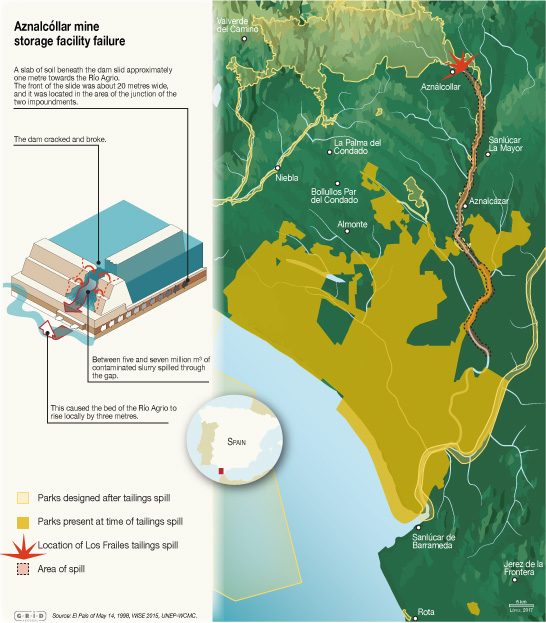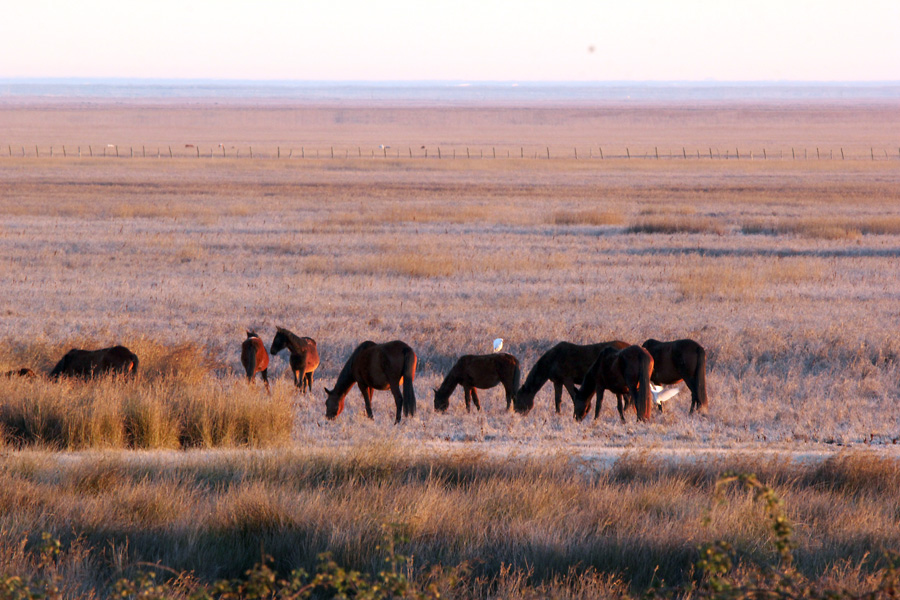(Published first in Finnish with different illustration in Suomen Luonto -magazine 7/2018.)
The newly starting mining activity threatens the famous Doñana wetland area in Southern Spain.
Spanish ecologists and nature organizations celebrated a bizarre anniversary in April: the largest environmental accident in the country happened 20 years ago. The mine dam at Aznalcóllar near the city of Sevilla in Andalucía broke down and an enourmous amount of acid and poisonous sludge spread along rivers towards the crown jewel of the country´s nature conservation, the Doñana wetland area.
The sludge containing heavy metals spread over 60 kilometres along the riverbed of Guadiamar, an essential fresh water source for the Doñana wetlands. The disastrous flood killed fish and birds and polluted an area of 46 square kilometres. It was stopped just before the boundaries of Doñana.

Aznalcóllar mine storage facility failure. Credit: GRID-Arendal
Now the area has been mostly cleaned and restored to a green corridor. The cleaning work and the compensations to farms summed up to about 250 million euros. The majority of the expenses was left to be covered by the Spanish administration.
The owner of the mine, a subsidiary of Boliden, has quit its operations. However, the same discharges threaten Doñana again, while the authorities have granted a permission to reopen the mine to another company, Grupo México. Five biggest nature organizations in Spain demand revoking of the permit, mistrusting the will and capacity of the company and the Andalusian administration to undertake and enforce adequate measures to properly close and seale the remaining pollution on site. According to the organizations the permit was settled before the environmental impact assessment, the environmental permit and the restauration plan of the old mine were finished. The NGOs fear the catastrophe might happen again.
Doñana is made unique by its diverse nature and location at the frontier between Europe and Africa. The area is a bird paradise for hundreds of thousands of migrating and nesting birds as well as for nature lovers and tourists. Also lots of Finland´s nesting bird species overwinter in the marsh lands, lagoons and wetland ponds of Doñana: common buzzards (Buteo buteo), kestrels (Falco tinnunculus), greylag geese (Anser anser), Eurasian cranes (Grus grus), redshanks (Tringa totanus), song thrushes (Turdus philomelos), robins (Erithacus rubecula) etc.
The nature of the wide wetlands lives in the rhythm of waters: the fresh and salty water ponds and in-shore meadows are at intervals dry and totally flooded. The quantity and purity of water is the most decisive factor in the ecology of the area. Nowadays the climate change and many human activities have an impact on Doñana´s nature. For example groundwater consuming farming and cattle breeding are practised around the most strictly protected area, the national park. Mining is continuously one of the most critical threats to Doñana.
Text and photo: Auli Kilpeläinen
More about Doñana:
The Invaluable Doñana Wetland Facing Threat of Drought – 2019
In Finnish:
Doñana osa I – Meren ja jokien rakentama luontoparatiisi – 2019
Doñana osa II – Mansikat uhkaavat maailmanperintökohdetta – 2019
- The Invaluable Doñana Wetland Facing Threat of Drought – 2019
- Neonicotinoids – Even PPBs Are Too Much for Insects – 2019
- Ecologists Defend the Invaluable Doñana Wetland – 2018
- European Mink Returns to Estonia – 2016
- Diving for Marine Protected Areas – 2015
- Organic Gardening Inspires Youngsters in Northern Spain – 2015
- Plastic Debris Spoils the Oceans – 2015
- Only Cute and Cuddly Are Worth Conserving? – 2014
- Gilbert´s Potoroo Was Rescued on an Australian Island – 2014








